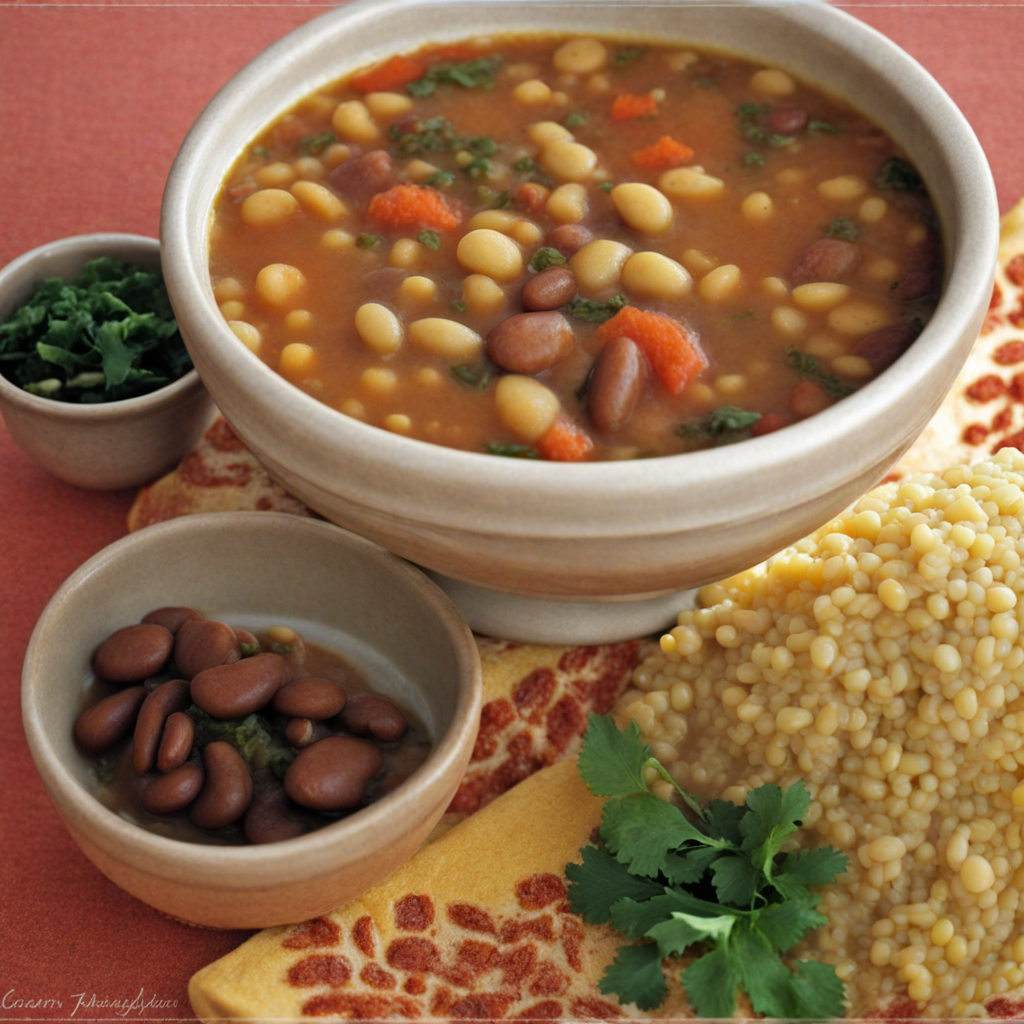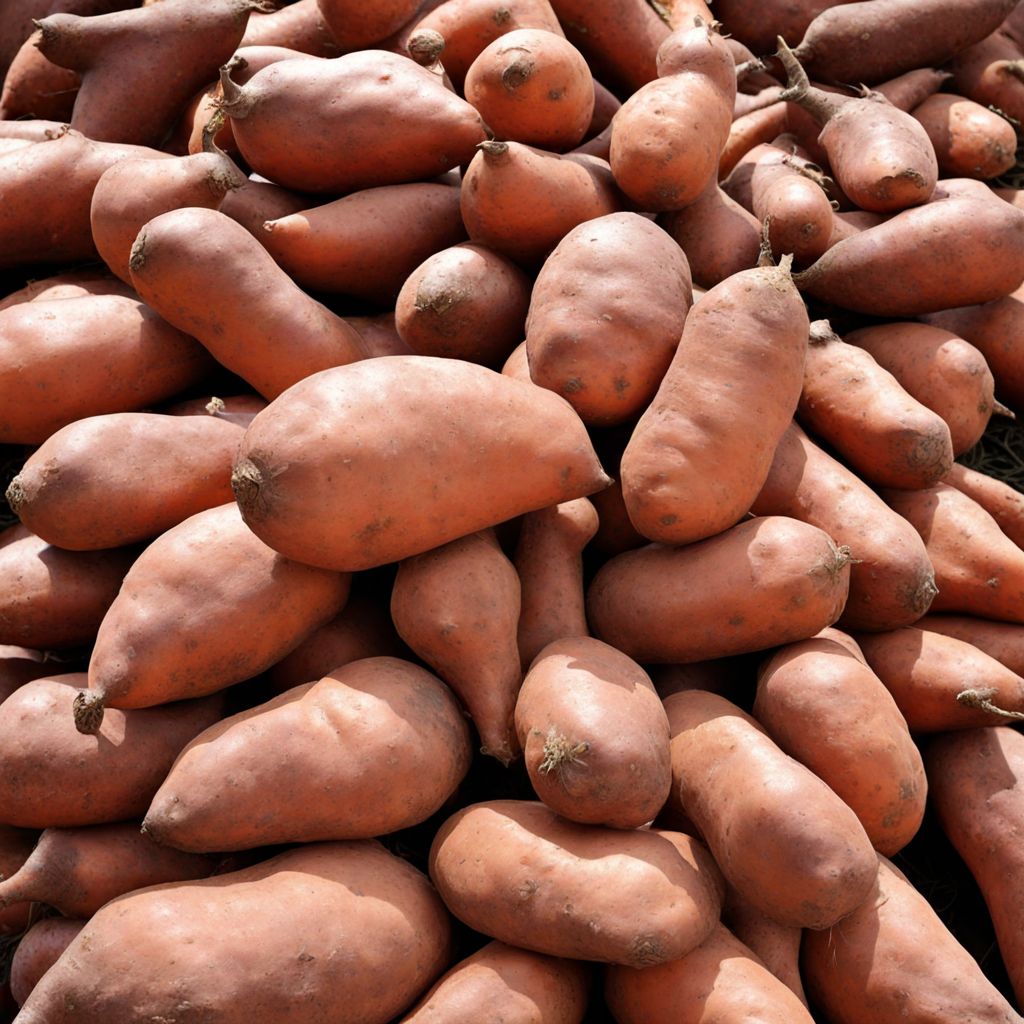Bean Soup
Bean soup from Eswatini is a hearty and comforting dish that embodies the rich culinary traditions of Southern Africa. This soup is primarily made from a variety of beans, including black-eyed peas, kidney beans, and cowpeas, which are simmered to perfection. The beans are often combined with locally sourced vegetables such as carrots, sweet potatoes, and sometimes leafy greens, creating a nourishing and filling meal that showcases the region's agricultural bounty. The vibrant colors of the ingredients reflect the natural beauty of Eswatini, making each bowl not only delicious but also visually appealing. Seasoned with aromatic spices and herbs, such as garlic, onions, and sometimes a hint of chili, Eswatini's bean soup offers a delightful blend of flavors that tantalize the taste buds. The slow-cooking process allows the ingredients to meld beautifully, resulting in a rich, savory broth that is both satisfying and soul-warming. Traditionally, this soup is often served with a side of freshly baked bread or a staple like pap, making it a complete and fulfilling meal that can be enjoyed at any time of the day. This dish is not just a staple in Eswatini; it also carries cultural significance, often enjoyed during communal gatherings and family meals. With its emphasis on wholesome ingredients and hearty flavors, bean soup is a perfect representation of Eswatini's culinary heritage, showcasing the importance of community and shared experiences around food. For anyone looking to explore new tastes, this bean soup promises an authentic and heartwarming introduction to the flavors of Eswatini.
How It Became This Dish
The History of Umbidvo Wetintsanga: A Culinary Gem of Eswatini #### Origins Umbidvo wetintsanga, a traditional dish from Eswatini (formerly Swaziland), is a vibrant reflection of the nation’s agricultural heritage and culinary practices. The dish, which translates to "pumpkin and corn porridge," is typically made with pumpkin, maize meal, and sometimes enriched with a variety of local vegetables and spices. The origins of Umbidvo wetintsanga can be traced back to the early agricultural practices of the Swazi people, who cultivated maize and pumpkins as staple crops. Maize, introduced to southern Africa in the 16th century from the Americas, quickly became a primary food source for many communities. In Eswatini, maize is not just a dietary staple; it symbolizes sustenance and community. The introduction of maize revolutionized local diets, allowing for the creation of hearty dishes like Umbidvo wetintsanga, which reflect both the agricultural bounty of the region and the ingenuity of its people. Pumpkins, indigenous to the Americas, were brought to Africa by European colonizers and adapted into local cuisines. In Eswatini, pumpkins are revered not only for their nutritional value but also for their versatility, serving as a base for numerous dishes, including Umbidvo wetintsanga. This dish showcases a harmonious blend of these two ingredients, reflecting the cultural fusion that has taken place over centuries. #### Cultural Significance Umbidvo wetintsanga is more than just a dish; it is a cultural emblem of Eswatini. The preparation and consumption of Umbidvo wetintsanga often coincide with significant cultural events, family gatherings, and celebrations. During traditional ceremonies and festivals, food plays a central role in bringing communities together, and Umbidvo wetintsanga is frequently featured as a highlight of these communal feasts. In many households, cooking Umbidvo wetintsanga is a multi-generational affair. Elders pass down recipes and cooking techniques to younger generations, reinforcing family bonds and cultural identity. The act of preparing this dish becomes a communal experience, where stories are shared, traditions are honored, and the essence of Swazi culture is transmitted. Moreover, Umbidvo wetintsanga holds a special place in the hearts of the Swazi people due to its association with nourishment and health. The dish is often consumed during times of hardship, such as droughts or economic challenges, as it is both filling and affordable. Its nutritional value, enriched with vitamins from the pumpkin and carbohydrates from the maize, makes it a beloved choice for families striving to maintain a balanced diet. #### Development Over Time Throughout the years, Umbidvo wetintsanga has evolved in response to changing circumstances, including globalization, urbanization, and the influence of modern culinary trends. While the traditional recipe remains popular, variations have emerged that incorporate new ingredients and cooking methods. For instance, some modern interpretations may include the addition of beans, spices such as cumin or coriander, or even dairy products like milk or cheese, reflecting a fusion of cultural influences and individual tastes. As Eswatini has developed economically and socially, the availability of ingredients has also changed. Supermarkets and local markets provide a wider range of produce, allowing for experimentation and adaptation in the kitchen. Urbanization has led to a rise in fast-paced lifestyles, prompting some to seek quicker preparation methods for Umbidvo wetintsanga. Instant maize meal and pre-packaged pumpkin puree are now common, allowing for the dish to be made more conveniently without sacrificing its essence. Despite these changes, the core of Umbidvo wetintsanga remains intact. It continues to be a cherished dish, emblematic of Swazi hospitality and heritage. In rural areas, traditional methods of cooking—such as using open fires and traditional pots—are still prevalent, ensuring that the authentic flavors and cultural practices are preserved. Meanwhile, urban Swazis are increasingly proud to showcase their culinary heritage, often hosting themed dinners or cooking classes that highlight traditional dishes, including Umbidvo wetintsanga. The dish has also gained recognition beyond Eswatini's borders. With the rise of culinary tourism and increased interest in African cuisines, Umbidvo wetintsanga has found its way onto the plates of adventurous diners around the world. Chefs and food enthusiasts are eager to explore this unique dish, often incorporating it into fusion menus or highlighting it in food festivals that celebrate African culinary traditions. #### Conclusion Umbidvo wetintsanga is a testament to the resilience and creativity of the Swazi people. Rooted in the rich agricultural practices of the region, this dish embodies the spirit of community, cultural identity, and nourishment. As it continues to evolve in response to modern influences while retaining its traditional essence, Umbidvo wetintsanga stands as a symbol of Eswatini's culinary heritage. In every bowl of Umbidvo wetintsanga, one can taste the stories of generations, the joy of communal gatherings, and the rich agricultural history of Eswatini. As the world becomes increasingly interconnected, this dish serves as a delicious reminder of the importance of preserving and celebrating cultural heritage through food. Whether enjoyed in a rustic homestead or a contemporary restaurant, Umbidvo wetintsanga remains a cherished culinary gem that tells the story of a vibrant nation and its people.
You may like
Discover local flavors from Eswatini







